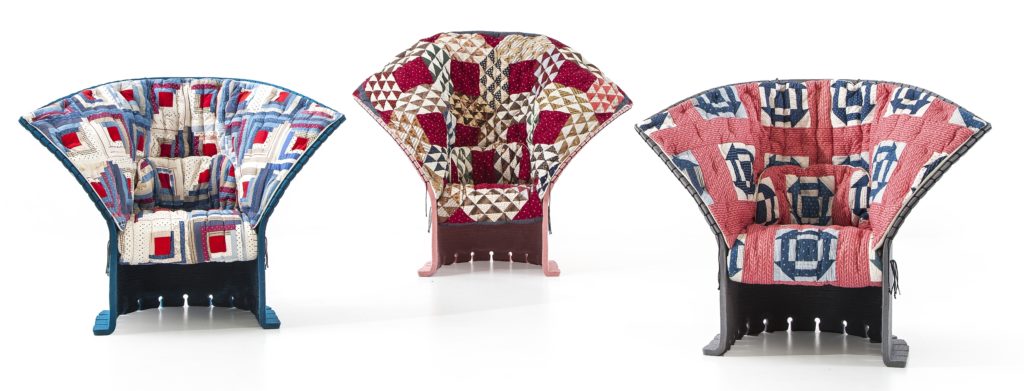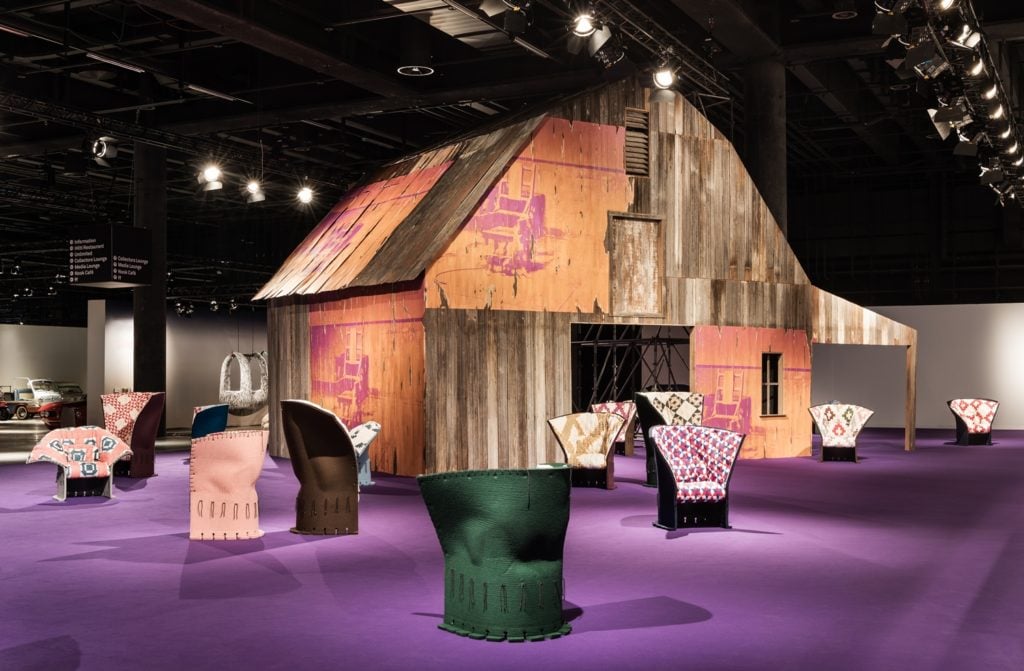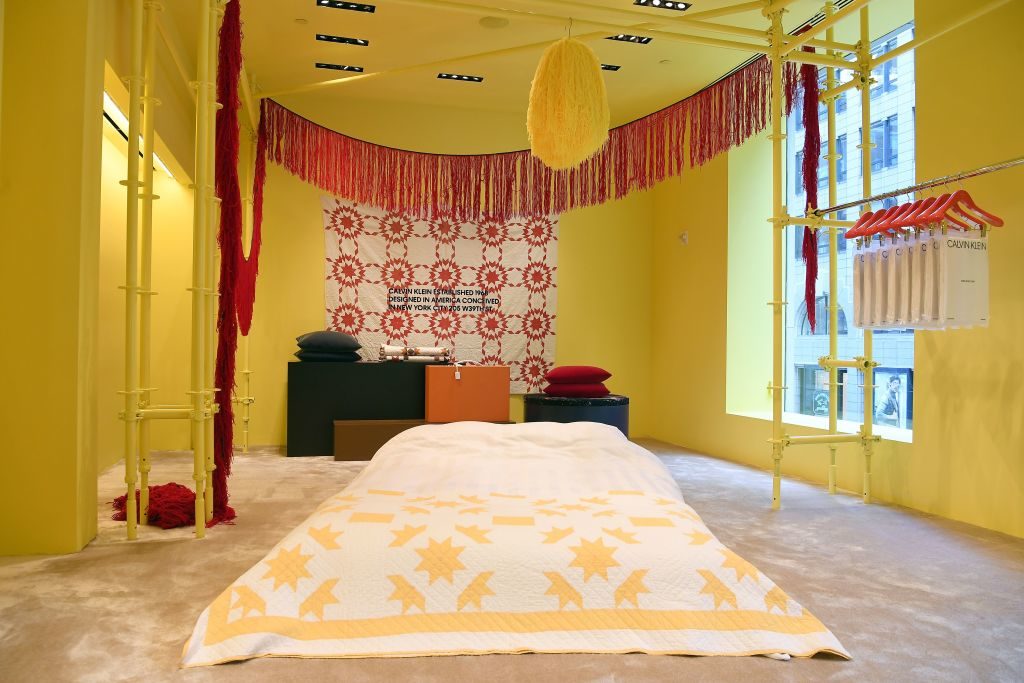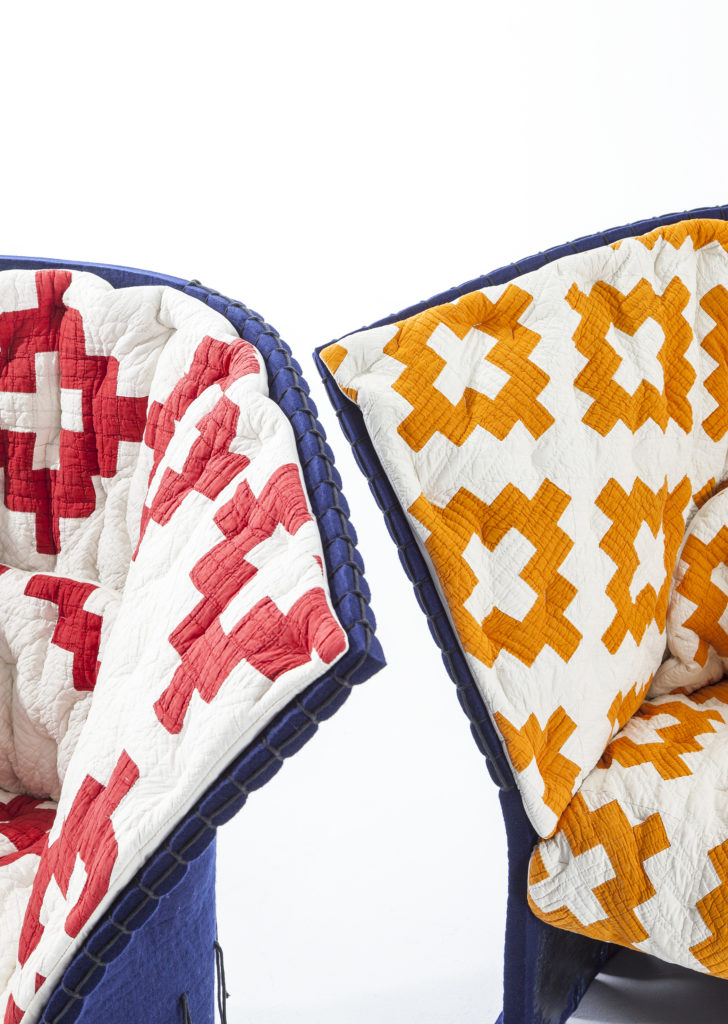Art Fairs
Calvin Klein Teams Up With Italian Artisans to Bring an Americana-Infused Chair Collection to Basel
Raf Simons brings his passion for design to Art Basel.

Raf Simons brings his passion for design to Art Basel.

It’s no secret that art has played a prominent role in Raf Simons’s career. And since taking the creative reins at Calvin Klein in 2016, the Belgian designer has only deepened his relationship with the art world, working with both American artist Sterling Ruby and the Andy Warhol Foundation in 2017. Now, Simons is bringing the same passion for creative collaboration to the design world with an ambitious collection of chairs for Design Miami at Art Basel 2018.
Indeed, Simons’s practice grew out of his studies in industrial design—an oft-forgotten fact that drives a lot of his work, collecting, and worldly curiosity. Upon entering Design Miami from Art Basel’s Unlimited section, that background comes into sharp focus. Guests are greeted immediately with Simons’s installation, a triangular collaboration between Calvin Klein, the Italian furniture manufacturer Cassina, and towering Italian designer Gaetano Pesce. Setting the scene, a reconstructed 19th-century wooden barn takes center stage on the violet-carpeted space, its side printed with Andy Warhol’s Electric Chair (1964).

Calvin Klein’s installation at Design Miami/Basel. Photo: Stefano Photo: Stefano De Monte,
courtesy of Calvin Klein.
However, the focus of the show is definitely Pesce’s 1987 Feltri chair for Cassina, 50 of which are nestled around the space—their internal lining replaced with antique American patchwork quilts, hand-selected by Simons.
The quilts are a key leitmotif in Simons’s rebranding of Calvin Klein, a symbol of Americana that feeds into a 360-degree push to reposition the brand at the height of American luxury. They have been featured on the Calvin Klein runway too, re-embroidered with the company’s ready-to-wear logo “CALVIN KLEIN 205W39NYC.” The latest iterations remain unbranded. The textile’s authenticity is undeniable: The homespun pieces date back as far as the 1870s, and their graphic, Escher-like compositions featuring stars, diamonds, latticework, and Cubist patterns are sourced from Pennsylvania, Indiana, Oklahoma, and Virginia.

Interior view of the Calvin Klein Store, with a floor-to-ceiling installation by Sterling Ruby and the debut of Raf Simons Fall 2017 collection. Photo: Angela Weiss/AFP/Getty Images.
In the 1980s, Pesce spoke of the Feltri chair as a “future primitive” design solution. “Many people say that the future will be more complex,” he said, according to Denver’s design-focused Kirkland Museum. “I don’t believe that. Instead, we will have shorter production runs—not millions of copies but 3,000 or 4,000. Technologies must, therefore, be inexpensive… Feltri represents this idea very well. To make 10 copies of it is the same price as to make a million copies.”
Originally offered with a poplin quilted interior, Pesce’s design gels well with Simons’s update, its blanket-stitched frame, knotted hemp fringe trim, and supple felt construction appearing all the more provincial. The Memphis edge is softened by the quilts’ multi-colored palette. The chair appears in two models, one tall and throne-like (coming in just under $12,000), the other a lower, squatter version (about $10,500), both injected with thermosetting epoxy resin that renders the felt rigid.

Cassina Feltri Limited Edition Calvin Klein chairs. Photo: Stefano De Monte,
courtesy of Calvin Klein.
But why choose a colorful Italian designer like Pesce? Why not pick a Belgian or American designer or one linked to Simons’s past? The answer, according to the designer, is “cultural correspondence.” Simons seeks out artists and designers whose work and sensibilities offer a complement—rather than a facsimile—of his own.
That practice also accurately describes his mentality when it comes to collecting art and design.
The designer’s fluid taste has been known to swing from the cool figurative paintings of Brian Calvin and photography by Robert Mapplethorpe to the classical porcelain work of Mid-century French potters like Georges Jouve and Pol Chambost.
And Simons is showing no signs of slowing down. At Basel, the designer was seen glued to a large silver Cady Noland at Sprueth Magers on Tuesday. It could well be the next poignant addition to this designer’s American dream, one so carefully curated through European eyes.